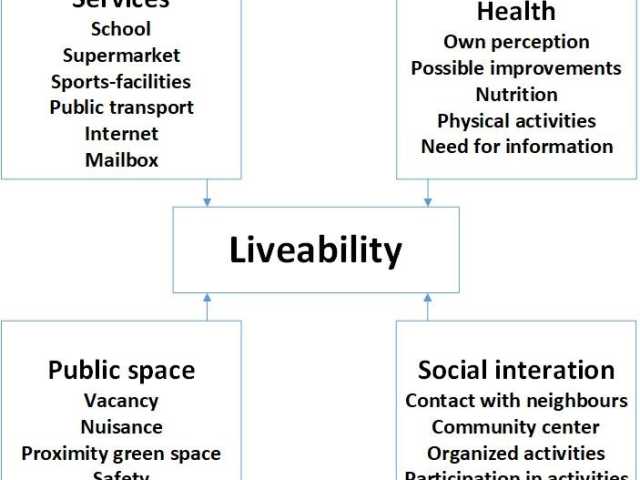Liveability in the villages of Annen, Anloo, Eext and Tynaarlo

Commissioned by the housing corporation Woonborg, two students of the Research Master Spatial Sciences carried out research considering the perceived liveability among Woonborg’s tenants in the villages of Annen, Anloo, Eext and Tynaarlo. The research focused on three main questions: i) What is the general state of the perceived liveability? ii) What factors contribute to this perceived liveability? And iii), what could the role of Woonborg potentially be with regard to the perceived liveability?
Rural shrinkage and liveability
Various regions in the Netherlands are facing (expected) population decline. Population decline often has implications regarding the liveability. Support for certain services such as supermarkets can decrease, causing the supermarket having to close down. In turn, this might lead to additional outmigration of people to areas with more services. In this sense, population decline is reinforcing itself. The villages of Annen, Anloo, and Eext and Tynaarlo are in areas that are facing (expected) population decline, which means that until 2040 the area is expected to shrink with 4%.
Defining liveability
The concept of liveability is difficult to grasp since it involves multiple dimensions. In this research we defined liveability as ‘the extent to which the living environment fits the needs and wishes of the individual’ Additionally, we derived four main factors from literature in order to colour the concept of liveability; i) services, ii) public space, iii) health and iv) social interaction. Subsequently, these four factors were divided into multiple variables. Services, for example, consisted of school, supermarket, sport facilities, a mailbox, public transport and internet.
Structure of the research
In order to learn more about the perceived liveability, an online survey was sent to the tenants of the housing corporation Woonborg in the villages of Annen, Anloo, Eext and Tynaarlo. Eventually, we received 66 fully filled in responses. Additionally, various interviews were held with employees of Woonborg about the role they could play in terms of liveability. This was mainly done in order to be able to create realistic policy recommendations for Woonborg based on our research. The collected data was analyzed using various statistical tools, one of these is multiple linear regression or Pearson’s correlation.
Results and conclusions
From the online survey and correlations, it appears that the perceived liveability among tenants of Woonborg in the villages of Annen, Anloo, Eext and Tynaarlo is generally positive. The differences between the villages are minimal. It is important to mention that some villages only had a small number of respondents, implicating that no definite conclusions can be drawn for these villages.
The factor ‘services’ is relatively important when explaining the perceived liveability compared to the factors ‘public space’, ‘health’ and ‘social interaction’. Moreover, the variable ‘participating in community activities’ (belonging to the category ‘social interaction’) is also important in explaining the perceived liveability. The role of Woonborg is generally considered to be positive. This is mainly because Woonborg is perceived as accessible and helpful. The question as to how Woonborg could contribute to the liveability has been answered very differently. More apartments and houses for starters and elderly people, the need for glass fiber (fast internet connection) and a more preventive approach by Woonborg were often mentioned.

